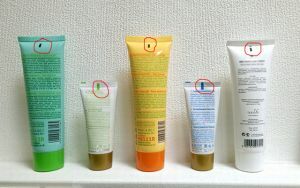 What does the color of the label on the toothpaste, which are often located on the tube spike, mean? This question is asked by consumers constantly, believing that in this way it is possible to reveal the secret of the composition.
What does the color of the label on the toothpaste, which are often located on the tube spike, mean? This question is asked by consumers constantly, believing that in this way it is possible to reveal the secret of the composition.
Thanks to the turbulent imagination, today there are several theories that are successfully applied in practice - when buying. And what, really, do these strips mean something?
Myths and Revelation
- Myths and Revelation
- Popular opinion
- Duration of application
- Presence of dyes
- Protection against periodontal disease
- Content of abrasive components
- Consumer races
- Financial conspiracy
- What is the meaning of labels
- Why are the colors of labels different?
Myths and exposure
There are several theories about the meaning of the color of a strip on a tube of toothpaste, most of which are "invented" by the consumers themselves.
Popular opinion
The most popular theory is the connection of a colored strip with its chemical composition. It fully discloses the color value according to the chemical composition used:
- The black strip indicates the presence of only chemical elements in the composition. It is not necessary to talk about the use of natural herbal ingredients.
- The blue strip indicates the content of 20% of the natural ingredients in the whole composition. The rest is harmful chemicals.
- Red color indicates the content of natural substances in the composition of the cleaning product, but only in half of the total amount.
- Green strip is the safest paste containing only natural ingredients.
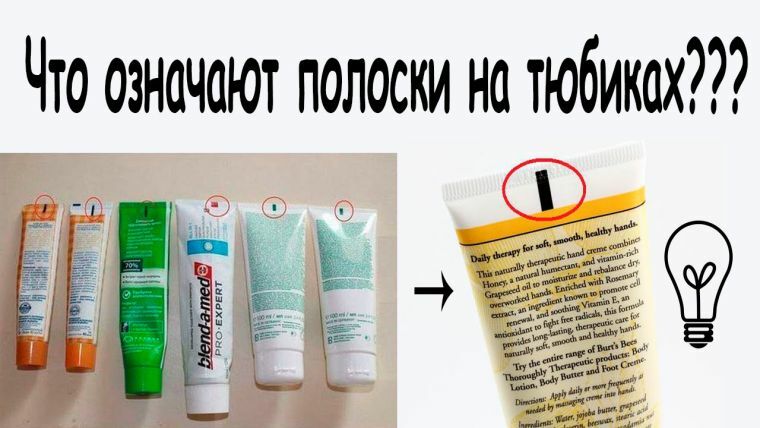
Duration of application
There is also a theory where the stripes on tubes of toothpaste indicate the possibility of the duration of product use.
Here are four statements:
- blue strip on the toothpaste means that it can be used daily;
- red - the composition includes substances that provide a curative effect, but it can be used no longer than 7 days;
- green a strip speaks about its strengthening action, term of use - no more than 30 days;
- black color means a bleaching property that adversely affects the enamel of the teeth.
Presence of dyes
There is a hypothesis about the presence of dyes in the product: 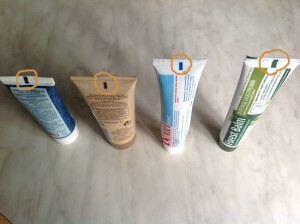
- According to this theory, in paste with green marking there are no synthetic dyes, and it consists only of natural components;
- tubes with black, brown and blue strips contain many harmful chemical dyes that impart color to the product.
- there are assumptions that marketers specifically apply green strips on tubes with paste, so that they are sold better - everyone knows that green means color of nature and benefit to a person.
Protection against parodontosis
The theory that prevents the development of periodontitis, says:
- black mark - the composition that provokes the development of periodontal disease;
- red mark - there are synthetic elements allowed by GOST;
- green mark - an environmentally friendly composition, the most useful for teeth.
Content of abrasive components
There is a hypothesis about the presence of abrasive components and the frequency of its use, according to tags on tubes. It's about the presence in the paste of small particles that bleach and polish your teeth, but in due course spoil the enamel.
According to this theory, products with a high content of abrasive particles are marked by strips of dark colors: black, brown, blue. Such compounds can be used no longer than 7 days.
The red strip means that the paste contains few abrasive particles and it can brush your teeth 3 times a week. But the composition with a green label can be used every day without harm to health.
Race of Consumers of
There is a somewhat strange theory of the presence of petroleum products in the toothpaste, which drastically affects the territorial purpose. Here they give an example:
- tubes with black strip are designed for the countries of Asia and the third world;
- with red and green strips make paste for European residents;
- USA can use the paste with the blue tag.
The contents of oil products are divided:
- black color indicates a large content of refined products;
- blue color - oil products contain less;
- red color - the components considered are very small;
- green color is an environmentally friendly product.
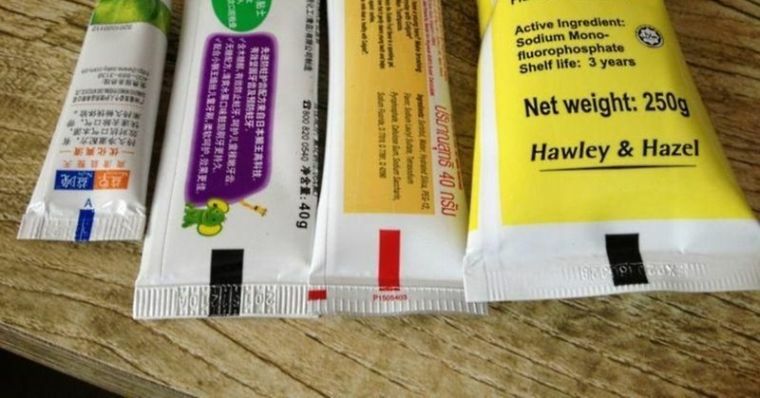
Financial conspiracy
There is a theory about the material situation of buyers who purchase toothpastes for daily consumption.
According to this hypothesis:
- black strip is applied to tubes with cheap toothpaste, in which inexpensive components;
- blue label is a better product;
- red strip is an elite remedy containing sparing ingredients for tooth enamel.
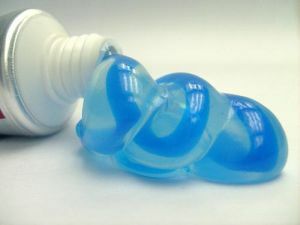 On the other color applications the theory is silent.
On the other color applications the theory is silent.
There are many assumptions about these labels on tubes with toothpaste, but what do they actually mean?
The truth debunks the myth of color strips and disappoints many dreamers.
What the labels actually mean
Do not trust the above speculations, because the composition is written on the package and it is enough to read it, and not to invent special properties with a color strip on the tube.
Color strips do not contain any secret messages, no matter how much some dreamers would like. Colored rectangles on tubes - is just a "marking" or "light sticker" of , which is needed by the conveyor to properly cut the workpiece for the tube.
The conveyor sensor reads the applied mark on the moving tape of the tube preform and at this point cuts it. Then, the cut foil blank is twisted, glued, the tube is filled with paste, with the cap and cap at the bottom. Finally, the edge of the tube is wrapped or soldered.
Why are the colors of the labels different?
Why the colors of the strips are different, it depends on the design of the tube. In order for the conveyor sensor to be able to read the mark, there must be a maximum contrast between the background and the light-emitting diode. 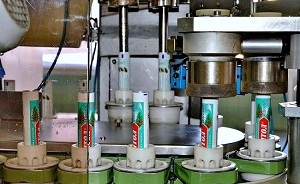
When a black color is used in the design of the tube, both the mark and the barcode will be black, if there is no design in the design, then a different, maximum contrast color is assigned to the background.
If the tube background is light, the dark color of the label( black, blue, brown) will be used. In the case when the background of the tube is dark, the label will be white.
Usually in the design of tubes are used 4 primary colors, which do not always fulfill the original ideas. Then the color schemes are supplemented by a prepress method.
To prevent colors from overlapping each other, the fifth color is assigned, which prints the barcode, the font on the package and the light stick on the tube.
Sensors are easier to capture one color, and it helps the manufacturer to optimize costs. Sometimes the function of photocounts performs design elements, then a colored strip will be absent on the tube.
Here is the secret of the labeling of toothpaste. It turns out that they do not carry any information about the composition of the toothpaste. In any case, you should not trust such elements when choosing a product. It is important to familiarize yourself with the composition on the packaging or on the manufacturer's website before purchasing the product.
